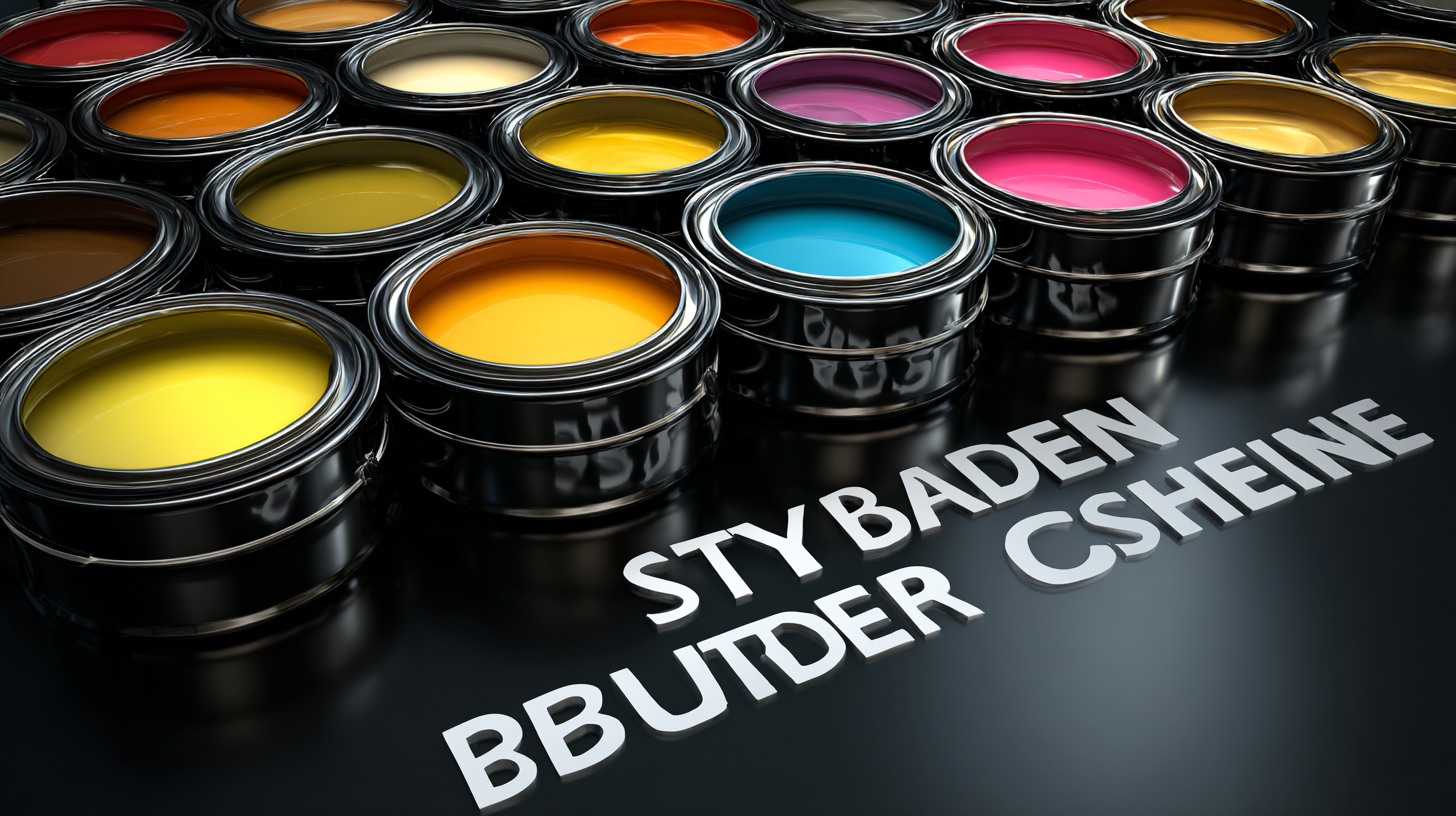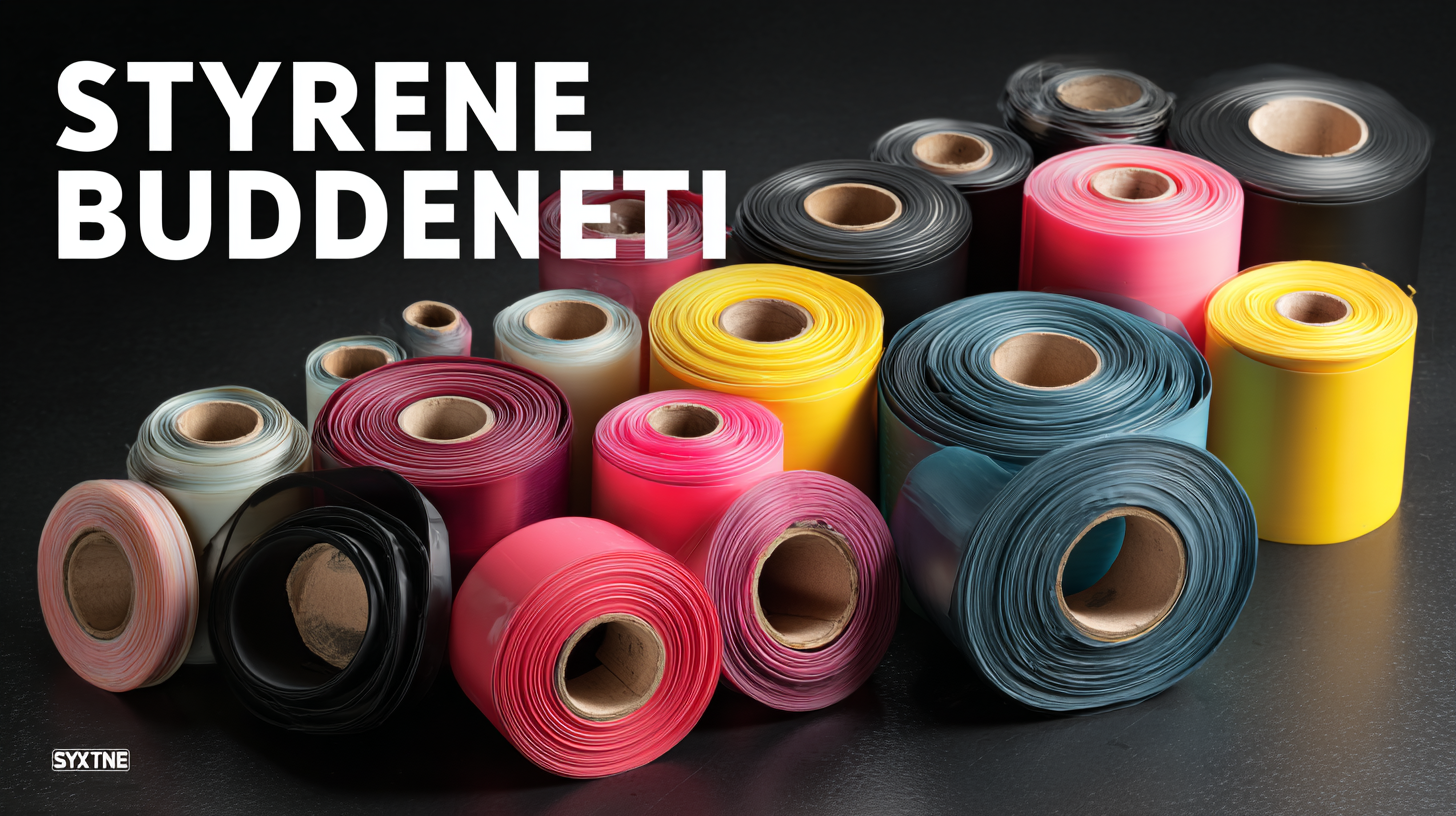Styrene Butadiene Rubber (SBR) is a critical material in various industries, known for its excellent abrasion resistance and resilience. According to recent market reports, the global SBR market is projected to reach USD 6.3 billion by 2027, expanding at a CAGR of 4.5% from 2020 to 2027. As the demand for SBR increases, particularly in the automotive and construction sectors, it becomes essential for businesses to strategically source this versatile elastomer. However, sourcing SBR is not merely a matter of finding a supplier; it involves a comprehensive understanding of multiple factors that influence quality, availability, and cost.

In this ultimate checklist, we outline ten key considerations that every business should evaluate when looking for the best Styrene Butadiene Rubber, ensuring a supply chain that supports product performance and sustainability objectives.
Styrene Butadiene Rubber (SBR) is a synthetic rubber that has become a popular choice across various industries due to its unique properties and versatility. One of the primary benefits of SBR is its excellent abrasion resistance, making it ideal for applications such as tires, where durability and longevity are crucial. Its ability to withstand wear and tear means that products made from SBR are less likely to degrade quickly, thereby reducing replacement costs and improving overall efficiency.
Another significant advantage of Styrene Butadiene Rubber is its excellent thermal stability. This characteristic allows it to perform well in different temperature ranges, which is especially beneficial in automotive and industrial applications. Additionally, SBR exhibits good resistance to aging, UV light, and oxygen, ensuring that products maintain their integrity over time. Various industries, including construction, footwear, and adhesives, have adopted SBR not only for its performance but also for its cost-effectiveness, making it a staple material in the production of high-quality goods.
 When sourcing Styrene Butadiene Rubber (SBR), it's crucial to evaluate essential quality parameters that ensure you are making the right choice for your applications. Key factors to consider include the polymer content, which directly affects the material's mechanical properties and resilience. Assessing the glass transition temperature is also vital, as it indicates the performance of the rubber under varying temperature conditions.
When sourcing Styrene Butadiene Rubber (SBR), it's crucial to evaluate essential quality parameters that ensure you are making the right choice for your applications. Key factors to consider include the polymer content, which directly affects the material's mechanical properties and resilience. Assessing the glass transition temperature is also vital, as it indicates the performance of the rubber under varying temperature conditions.
Tips for ensuring quality include requesting detailed technical data sheets from suppliers, which should include information on polymer grades and composition. It's also beneficial to conduct practical tests such as tensile strength and elongation at break measurements, to evaluate the rubber's performance in real-world scenarios. Collaborating with suppliers who have a strong reputation in the industry can further enhance your sourcing decisions.
Additionally, pay attention to processing characteristics when sourcing SBR. The viscosity and the degree of filler dispersion can significantly influence the processing ease and final product quality. Establishing a thorough understanding of these factors will aid in selecting the best SBR for your specific needs, ultimately leading to enhanced product performance and satisfaction.
When sourcing styrene butadiene rubber (SBR), identifying the best suppliers is crucial for ensuring quality and competitive pricing. Start by researching potential suppliers’ reputations in the industry. Look for manufacturers with a proven track record of delivering high-quality SBR products that meet international standards. Reading customer testimonials and case studies can also provide insights into their reliability and service levels. Additionally, consider suppliers who specialize in SBR and have a deep understanding of its applications across various industries, such as automotive and construction.
Next, evaluate the supplier's production capabilities and certifications. A reputable supplier should have modern manufacturing processes and adhere to relevant quality control measures. Certifications such as ISO 9001 can be indicators of a supplier's commitment to quality management. It’s also beneficial to inquire about their technical support and customization options, as the ability to tailor SBR products to specific needs can enhance your end application. By focusing on these key aspects, you can successfully navigate the sourcing process and partner with the best suppliers in the market.
| Factor | Description | Importance Rating (1-5) | Comments |
|---|---|---|---|
| Quality Standards | Ensuring the rubber meets industry-specific quality tests. | 5 | Critical for performance. |
| Supplier Reputation | Evaluate the past experiences and feedback from other customers. | 4 | Trustworthy partners lead to reliable supply. |
| Pricing | Assess the cost-effectiveness in relation to the quality offered. | 4 | Balance cost with quality. |
| Availability | Ensure consistent supply and timely delivery. | 5 | Critical to avoid production delays. |
| Technical Support | Check if the supplier offers technical assistance and consultancy. | 4 | Helps in troubleshooting potential issues. |
| Sustainability Practices | Look for environmentally friendly processing and sourcing methods. | 3 | Increasingly important for corporate social responsibility. |
| Customization Options | Ability to provide tailored formulations to meet specific needs. | 4 | Essential for specialized applications. |
| Logistics Capabilities | Assess the supplier's logistics and distribution networks. | 3 | Important for efficient supply chain management. |
| Compliance with Regulations | Check if the rubber meets international and local regulations. | 5 | Non-compliance can lead to penalties. |
| Trial Samples | Request for samples to test quality before making a bulk order. | 4 | Allows assessment in real applications. |
When sourcing styrene butadiene rubber (SBR), understanding pricing trends is crucial for making informed purchasing decisions. The pricing of SBR can be influenced by a variety of factors, including raw material costs, production capacity, and market demand. As the global economy fluctuates, so too does the pricing of essential inputs like butadiene and styrene, which play a significant role in SBR manufacturing. Keeping an eye on these commodity prices can provide insight into potential price changes in SBR, allowing businesses to time their purchases strategically.
Additionally, seasonal demand fluctuations can impact the pricing of SBR. Industries that rely on SBR, such as automotive and construction, often experience peak production seasons, which can lead to temporary shortages and price hikes. Understanding the cyclical nature of these industries can help purchasers anticipate price trends and negotiate better terms with suppliers. Furthermore, exploring regional differences in pricing can offer opportunities for cost savings, as certain markets may offer more competitive rates due to lower transportation costs or surplus production capacity. By staying informed about these key pricing trends, businesses can optimize their sourcing strategies and improve their overall margins.
This chart illustrates the average pricing trends of Styrene Butadiene Rubber (SBR) over a span of six years, from 2018 to 2023. As observed, there is a general upward trend in pricing, which may be influenced by various market factors.
When sourcing Styrene Butadiene Rubber (SBR), sustainability factors should play a pivotal role in your decision-making process. With the growing concern over environmental impacts, choosing suppliers who prioritize sustainable practices can significantly enhance your brand's reputation and reduce its carbon footprint. Look for companies that utilize renewable resources and engage in responsible waste management practices. This commitment not only reflects a company's ethical standards but also ensures compliance with increasingly stringent environmental regulations.

Tip: Evaluate the lifecycle of the SBR you're considering. Opt for suppliers who provide transparency in their sourcing methods and can demonstrate a reduced environmental impact throughout the product's lifecycle. This might include sourcing raw materials from certified suppliers or implementing efficient manufacturing processes that minimize resource consumption.
Additionally, consider the potential for recycling or reusing SBR products. Suppliers who integrate circular economy practices show a commitment to sustainability and can help you create a more environmentally friendly supply chain. By prioritizing these sustainability factors, you not only foster a greener planet but also create long-term economic benefits for your business.
Tip: Establish partnerships with suppliers who are investing in research and development for sustainable SBR alternatives, such as bio-based or recycled content. This proactive approach will enhance your product offerings while aligning with the growing consumer demand for environmentally responsible products.
